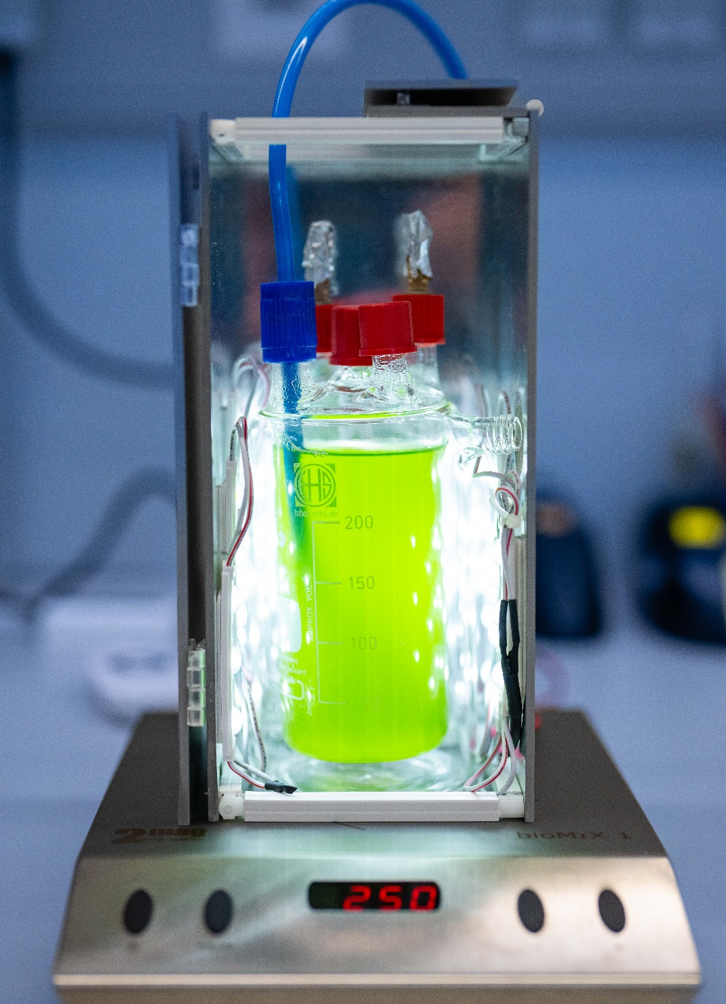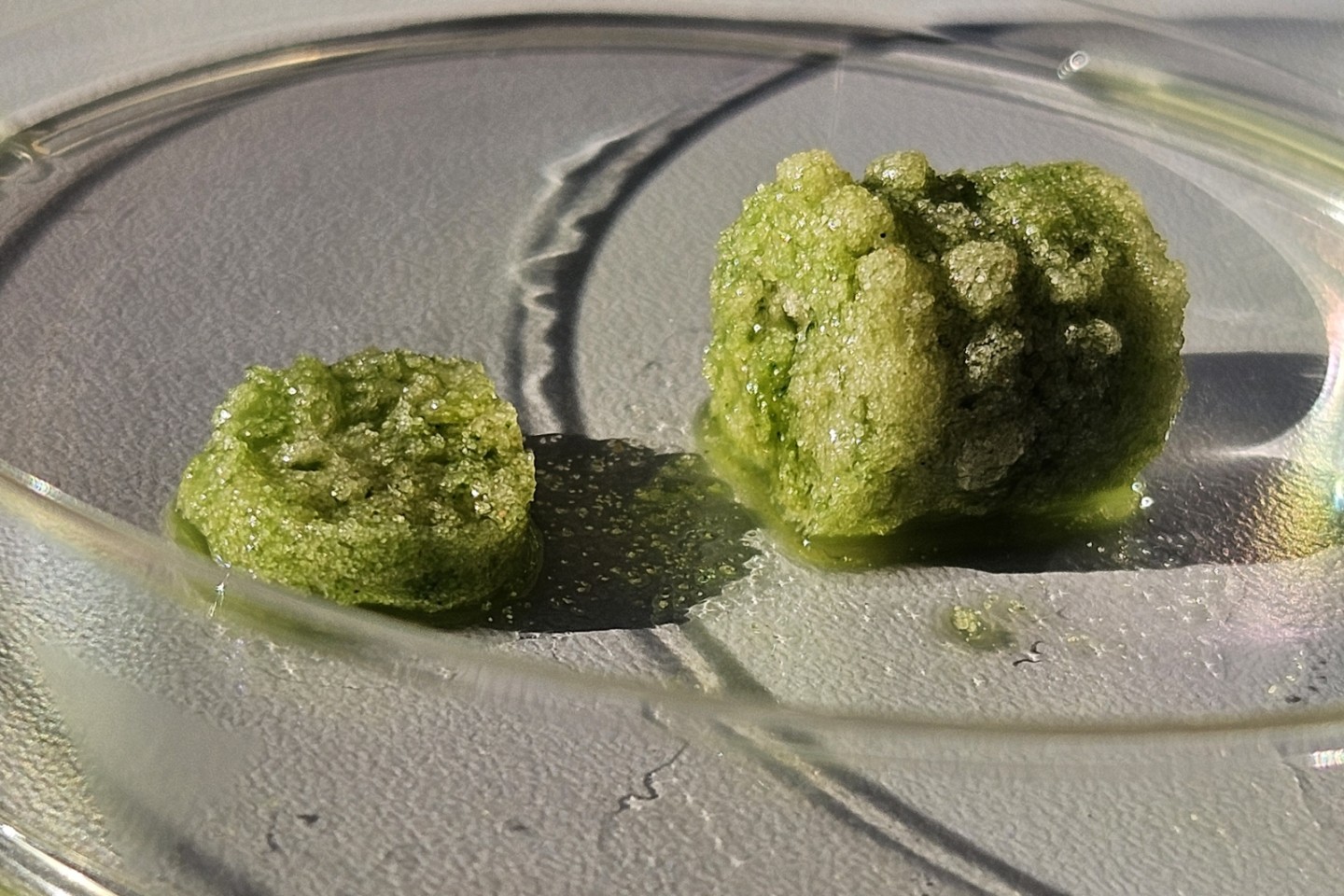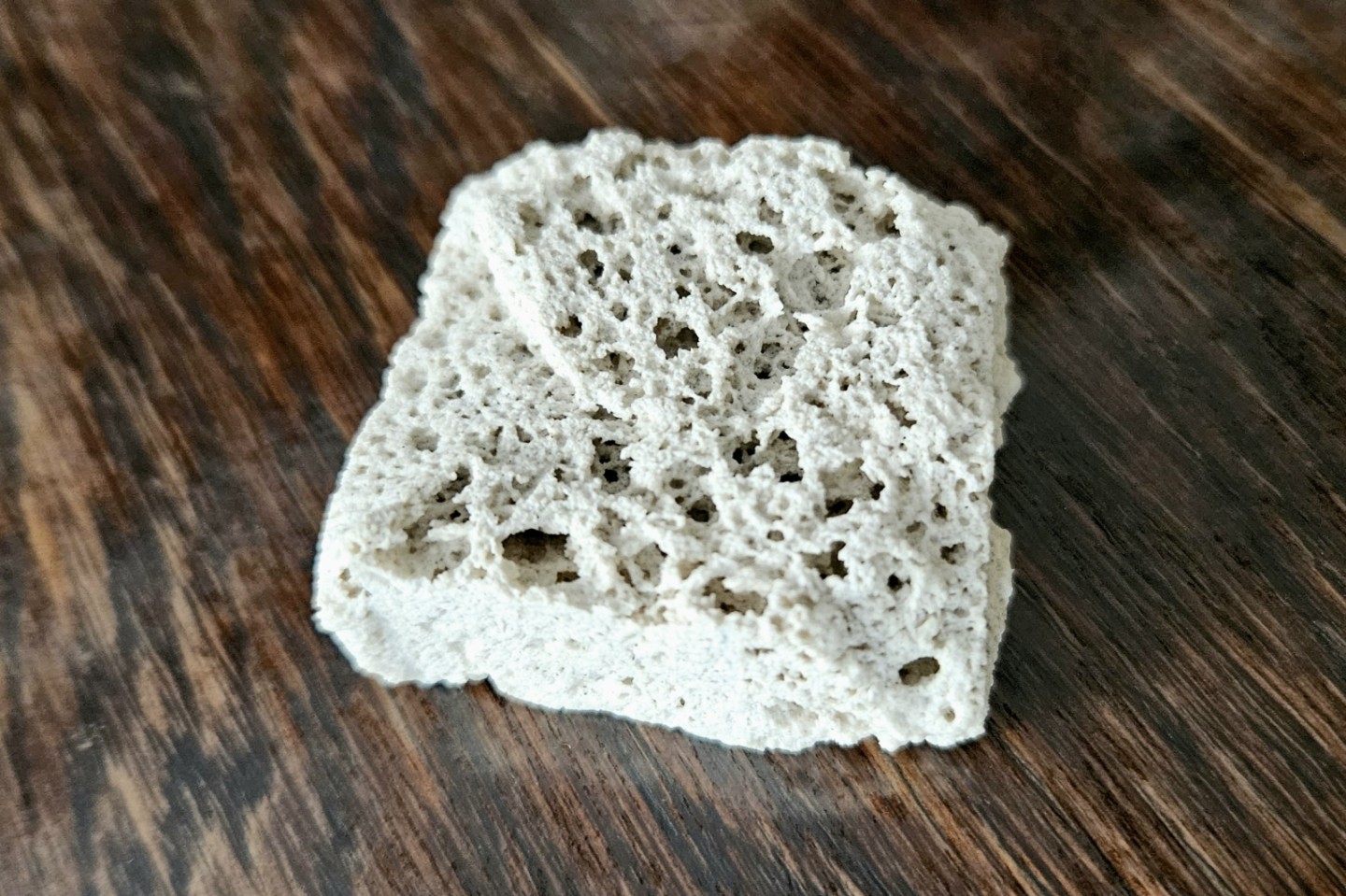Transitioning to climate-friendly construction
Bio-concrete and biogenic construction materials with cyanobacteria



Fraunhofer researchers have developed a method of creating biogenic construction materials based on cyanobacteria. The bacteria multiply in a nutrient solution, driven by photosynthesis. When aggregates and fillers such as sand, basalt, or renewable raw materials are added, rock-like solid structures are produced. Unlike traditional concrete production, this process does not emit any carbon dioxide, which is harmful to the environment. Instead, the carbon dioxide is bound inside the material itself.
The construction industry has a problem. Cement, the main component in concrete — arguably the most-used construction material of our time — is bad for the climate. CO2 emissions from cement production are very high. According to the German Environment Agency (UBA), in 2018 cement production accounted for some 20 million metric tons of CO2 emissions in Germany alone. That’s equivalent to about ten percent of all industrial emissions.
Researchers from the Fraunhofer Institute for Ceramic Technologies and Systems IKTS and the Fraunhofer Institute for Electron Beam and Plasma Technology FEP are now introducing an eco-friendly, biologically induced method of producing biogenic construction materials as part of the “BioCarboBeton” project. Not only does the process not emit any carbon itself; on the contrary, the climate-damaging gas is used for the process and then bound inside the material.
The centerpiece of the new method are cyanobacteria, formerly known as blue-green algae. These bacterial cultures are capable of photosynthesis. As light, moisture, and temperature interact, they form structures known as stromatolites made from limestone. These rock-like biogenic structures have existed in nature for 3.5 billion years, which attests to the resilience and durability of this biological process. Just like back then, CO2 is captured from the atmosphere as part of the mineralization process and then bound in the biogenic rock.
The Fraunhofer researchers have succeeded in mimicking this natural process with a technological method. Under the project management of initiator Dr. Matthias Ahlhelm, who also contributed the idea, Fraunhofer IKTS is developing materials and processes, selecting potential fillers as well as binding agents, and providing the form and structure.
Researchers at Fraunhofer FEP, led by Dr. Ulla König, are establishing the methods of culturing the cyanobacteria, the complementary microbiological analysis, and the upscaling of the biomass production to be achieved.
Bacterial solution becomes solid
In the first step to produce biomass, the light-sensitive cyanobacteria are cultivated in a nutrient solution. The intensity and color of the light source used affect the bacterial photosynthesis and metabolism. To ensure that the bacterial solution can undergo mineralization to produce stromatolite-like structures, calcium sources such as calcium chloride are added. After that, the researchers create a mixture of hydrogels and various fillers, such as different kinds of sand, including sea or silica sand. Additional CO2 is added to increase the content of dissolved carbon dioxide and support the process.
The bacterial mixture is stirred to the point of homogeneity and then given structure by being transferred to molds, for example. The molds should preferably be translucent so the bacterial metabolic and photosynthesis processes can continue. Subsequent mineralization leads to the final solidification. The bacterial mixture can also be shaped through spraying, foaming, extrusion, or additive manufacturing, giving it the form in which the final stages of mineralization take place.
Alternatively, porous substrates can also be produced and subsequently treated with the cyanobacteria culture: “The developing solid structure is still porous during the process, so light enters the inside and drives the carbon dioxide fixation through limestone mineralization. We can stop the process by removing the light and moisture or changing the temperature,” Ahlhelm explains. At that point, all the bacteria simply die off. The result is a solid product based on biogenic calcium carbonate and fillers that can potentially be used as brick, for example. The bio-based construction materials made from cyanobacteria do not contain any toxic substances.
One of the goals of the BioCarboBeton project is to determine the possible material and mechanical properties of the biogenic materials to be produced and to scale up the processes. The researchers are already thinking about a circular process design. For example, the carbon dioxide could be sourced from industrial waste gases. The team is currently working with biogas. Basalt and mine waste could be used as sources of calcium, but so could milk residue from dairy operations. And aside from sand, construction debris or renewable resources can also be used as filler.
Applications – from insulation to mortar
Targeted selection of fillers and management of process and mineralization parameters allow for manufacturing of products for a wide range of different application scenarios. Potential applications include insulation material, brick, formwork filling, and even mortar or stucco that cures or hardens after it is applied.
Now that the team of researchers has established and tested the process at Fraunhofer IKTS and Fraunhofer FEP, they are working to scale the volumes and determine the desired solid properties. The goal is to enable manufacturers to produce the ecofriendly bio-based construction materials in the necessary volumes, quickly and cost-effectively.
Ahlhelm and König believe in the process: “Our method shows the huge potential that can be unlocked through biologizing technology. Overall, our BioCarboBeton project is an opportunity for a big step toward a circular economy in the construction industry and beyond.”
- Research News (fraunhofer.de)
 Fraunhofer Institute for Electron Beam
Fraunhofer Institute for Electron Beam